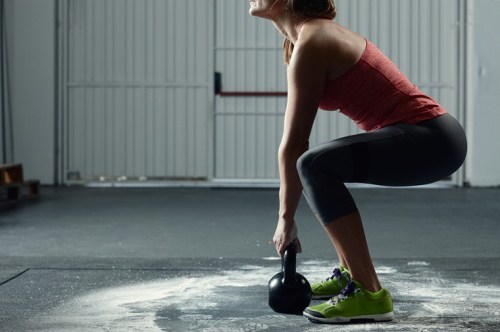We asked the pros which is better: short workouts vs. long workouts
Kira Stokes and Sean Foy tackle the great debate in fitness: whether long workouts or short workouts pack more benefits.

Fitness trends tend to swing from one extreme to the other. One year, seriously long workouts are all the rage and everyone you know has transformed into a triathlete. The next year, it’s all about HIIT in as little time as possible.
Ultimately, workouts are personal and should never be determined by trends. (As the saying goes, the best workout is the one you’ll actually stick with.) Yet there are compelling cases to be made for both the long workout and its far shorter cousin.
We asked two fitness experts to weigh in on the great long vs. short workout debate: Which is better?

The short workout: Sean Foy, exercise physiologist and author of The Burst Workout
Foy is sometimes referred to as “America’s fast fitness expert,” and he’s seriously into the whole short workout trend. One major reason? It’s eminently doable.
“Lack of time—or perception of lack of time—is the number-one barrier when it comes to developing a regular exercise program,” he says. Short workouts (i.e. ones you can do in 10 minutes or less) are the antidote to that modern frenetic lifestyle—and they still offer plenty of benefits.
And one of the biggest benefits is simply the sense of accomplishment people feel when they crush a short workout. Like, if you manage to squeeze in a 10-minute HIIT routine on a day that feels like absolute madness, that does very good things for your mind and sense of self.
But beyond that, studies have shown that short bursts of high-intensity interval training can be more effective than 45 minutes of less strenuous exertion. “We know that people see improved cardiovascular endurance,” Foy says. “We see changes in people’s triglyceride panels and we also see a boost in healthy hormones.”
Studies have shown that short bursts of high-intensity interval training can be more effective than 45 minutes of less strenuous exertion.
There are a lot of variations on the short workout, but Foy’s a big fan of a formula he calls: “4, 3, 2, 1,” which involves cardio, resistance training, core strengthening, and stretching. For example:
• Four minutes of high-energy cardio, like 30 seconds of light marching followed by 30 seconds of fast jumping jacks—then repeat.
• Three minutes of upper and lower body resistance training, like, say, a squat followed by a reverse push-up.
• Two minutes of core strengthening. (Plank, anyone?)
• And finally, one minute of deep breathing and stretching to cool down.
Foy says short workouts that hit those four main components are awesome for people who are just starting to get into shape, as well as for people who are already regular exercisers but could benefit from short bursts to help combat the toll of sitting all day.
It took some convincing, even for him. “I was very skeptical [of short workouts],” Foy says. “But once I began to test this, I was blown away not only by the metabolic response, but how these short workouts can affect a person’s emotional state.”

The long workout: Kira Stokes, celebrity trainer and creator of The Stoked Method
First thing’s first: Stokes is adamant that she’s not anti-short workouts. She loves short workouts. Everyone should combine a mix of shorter and longer workouts to truly challenge their bodies in a safe, effective way, she says.
And yet Stokes definitely has a soft spot for a longer sweat session, as evidenced by the fact that she offers a 90-minute boot camp and several 75-minute classes, including her signature Stoked360 (described on her website as a “75-minute total body assault”).
Generally speaking, Stokes considers anything that’s 75 minutes-plus to be a long workout, and she says it should ideally include a mix of strength training and cardio. Unlike HIIT, the goal isn’t to keep your max heart rate at, say, 80 percent (yikes!) the whole time. Instead, it’s to build endurance with lots of peaks and valleys, activity-wise.
A longer class provides a controlled way to bring the body to the point of true fatigue—which also challenges your mind.
While that all sounds pretty reasonable, Stokes says that with the exception of marathoners, people tend to be unnecessarily intimidated by the idea of a 75- or 90-minute workout. Which she thinks is too bad, because they’re missing out on a lot of benefits.
The first? The power of repetition. “In Stoked, we go through every circuit three times, and that third time is where you get to that point where if I asked you to do another set, you couldn’t do it,” she says. A longer class provides a controlled way to bring the body to the point of true fatigue—which also challenges your mind.
Of course, don’t go from doing, say, three 30-minute jogs a week to suddenly trying two 90-minute bootcamps back-to-back. “Maybe go take your usual 50-minute class, and then go home and run a mile and jump rope for 10 minutes,” Stokes recommends. “Having two longer workouts throughout the course of your week, whether in a studio or on your own, is a great thing to aim for.”
Another great debate in fitness: workout machines vs. free weights. And if you’re ready to up the intensity, here’s a rundown of the short-term fitness challenges out there.
Sign up for the Well+Good SHOP Newsletter
Get exclusive deals on wellness, beauty, fitness, and food products that have been hand-picked by our editors.
Got it, you've been added to our email list.







